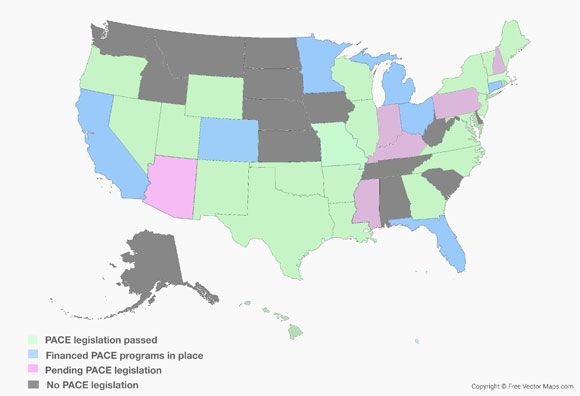Cities and states across the U.S. have issued over $43 million to more than 180 commercial property-assessed clean energy (PACE) financed projects.
Nearly half of the projects are in either offices or multifamily buildings. Retail and the services sector represent about 10 percent market share each, according to data from PACENow, a nonprofit that promotes PACE programs.
PACE allows investments in energy-efficiency retrofits and distributed renewable generation to be paid back through a tax that is tied to the property, which lowers the risk for both lenders and owners and can potentially open up a far larger swath of the energy efficiency market.
As of October, PACE legislation has been enacted in 31 states and is available in over 400 municipalities. However, the passage of legislation does not mean that money is flowing. Of the 31 states, only seven states and the District of Columbia have funded the programs that were responsible for doling out the more than $43 million.

Amongst states that have passed legislation, there is a large degree of variability. New York, Wisconsin and Missouri, for instance, have set up programs and are open for business, but do not yet have funded projects.
PACE financing can be complicated to set up, as it involves many stakeholders and is a relatively new concept, so it can take a while to bring everyone onto the same playing field. As more PACE-backed bonds proliferate on the market, it should become easier for states and municipalities to build and finance programs.
Many other regions are actively developing their programs, including Texas, Oregon and Georgia. Other states, like North Carolina and Wyoming, have the laws in place to support PACE, but no programs in operation or in development.
Although states are eager to have PACE financing, it’s not simple, and there is more than one way to skin the proverbial cat. In many states, such as California, PACE programs are run by municipalities, while Connecticut has employed a state-level approach. Texas is developing a “PACE in a Box” program to make it easy for states and counties to roll out the program starting next year.
For more information on the breakdown of current PACE projects, check out market data from PACENow.



